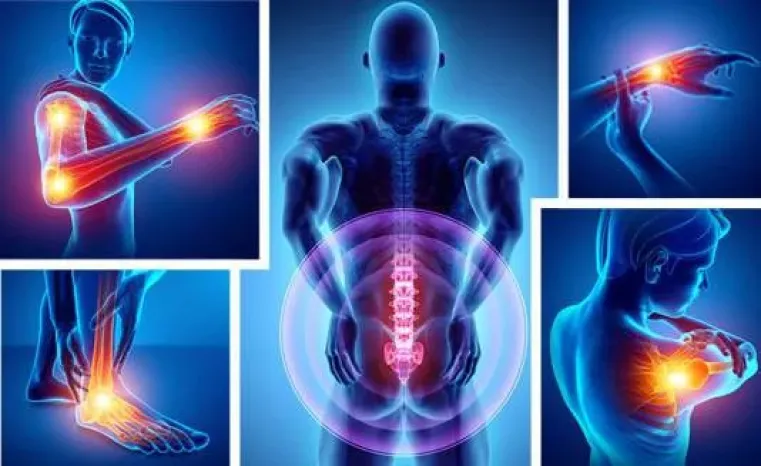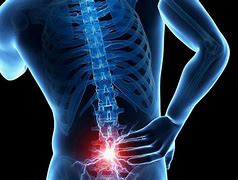Nerve Compression
Nerve compression, also known as a pinched nerve, occurs when a nerve is squeezed or compressed. This condition usually results from surrounding tissues applying pressure on the nerve. Symptoms may include pain, numbness, tingling and even muscle weakness. Nerve compression often occurs in the spine, neck, back or joints and is typically associated with factors like physical activity, poor posture or trauma. Treatment options, as recommended by your doctor, usually aim to relieve symptoms and reduce pressure on the nerve. These treatments may include physical therapy, madication and sometimes surgical intervention.
Contents
- What is Nerve Compression?
- What are the Symptoms of Nerve Compression?
- What are the Causes of Nerve Compression?
- How is Nerve Compression Diagnosed?
- How is Nerve Compression Treated?
What is Nerve Compression?
Nerve compression is a condition that occurs when a nerve is squeezed or compressed by surrounding tissues in the body. Nerves carry sensory information from different parts of the body and send movement commands to muscles, facilitating communication within the nervous system.
Nerves compression typically occurs when tissues such as bones, ligaments, tendons or muscles around the nerve narrow or apply abnormal pressure. This impedes the nerve’s normal function and can lead to various symptoms. Symptom may include pain, numbness, tingling, weakness and even sensory loss.
It is commonly found in areas such as the spine, neck, back, wrist, elbow or knee. Causes can include repetitive movements, poor posture, trauma, inflammation or anatomical abnormalities.
This condition is generally treatable. Treatment usually focuses on alleviating symptoms and reducing pressure on the nerve. Methods such as physical therapy, exercises, medication and if necessary surgical intervention may be used. The treatment plan is personalized based on the individual’s symptoms, age, health condition and the severity of the nerve compression.
What are the Symptoms of Nerve Compression?
The symptoms of nerve compression can vary depending on the location of the pinched nerve and the severity of the pressure. However, the following symptoms are commonly observed.
- Pain: Pain is typically felt in the area where the nerve is compressed. This is often a result of the pressure disrupting the normal communication of the nerve.
- Numbness and Tingling: Numbness or tingling sensations may occur in the region where the nerve is compressed. This is often a result of the pressure disrupting the normal communication of the nerve.
- Weakness: A compressed nerve may prevent the muscle in the affected area from functioning properly, leading to a sensation of weakness. For instance, if the nerve in the wrist is compressed, weakness in the hand may be experienced.
- Sensory Changes: Nerve compression can lead to changes in sensory perception in the affected area. This might include altered responses to touch, temperature or pain.
- Limited Range of Motion: Nerve compression can restrict the range of motion in the affected area. For example, someone with a pinched nerve in the spine might find it difficult to turn or bend in certain directions.
These symptoms are common indicators of nerve compression, but they can vary from person to person. The specific symptoms depend on the location and severity of the compression. If you are experiencing any of these symptoms, it is important to consult a healthcare professional.

What are the Causes of Nerve Compression?
Repetitive Movements: Continuous irritation of nerves in a specific area due to repetitive motions can lead to nerve compression over time. For example, frequently performing the same hand or wrist movements while using a computer can result in carpal tunnel syndrome.
Poor Posture: Incorrect posture can put pressure on nerves in certain parts of the body. This is particularly common in the spine, neck and back, where poor posture can lead to nerve compression.
Trauma and Injuries: Traumatic events such as accidents, falls or sport activities can cause nerve compression. These injuries might directly damage the nerves or cause surrounding tissues to press against the nerves.
Anatomical Abnormalities: Congenital anatomical abnormalities or developmental anomalies can prevent nerves from moving normally or can cause them to become compressed.
Inflammation and Swelling: Inflammatory conditions such as arthritis, tendinitis or bursitis can cause surrounding tissues to press against nerves, leading to compression.
Cysts or Tumors: Cysts or tumors around nerves can lead to compression by exerting pressure on the nerves.
Metabolic Conditions: Metabolic disorders like diabetes can cause nerve damage and compression. Diabetic neuropathy, for instance can develop due to prolonged exposure to high blood sugal levels, which damages the nerves.
How is Nerve Compression Diagnosed?
The diagnosis of nerve compression typically involves a series of evaluations and tests conducted by a healthcare professional. The diagnostic process may include the following steps:
- Medical History and Physical Examination: The doctor will take a detailed medical history, asking about the duration, severity and relationship of symptoms to specific activities. A physical examination will follow, during which the doctor will assess the affected area. During the examination, the doctor looks for signs of nerve compression and evaluates the function of the nerves.
- Imagining Tests: To determine the cause of nerve compression, the doctor may order imaging tests such as X-rays, Magnetic resonance imaging (MRI) or computed tomography (CT) scans. These tests help evaluate the condition of the nerves and surrounding tissues and can assist in identifying the underlying cause of the compression.
- Electrophysiological Tests: Electrophysiological tests, such as electromyography (EMG) and nerve conduction studies (NCS) are used to assess nerve function. EMG measures muscle activity, while nerve conduction studies evaluate the transmission of signals between nerves. These tests provide detailed information about the cause and impact of the nerve compression.
- Laboratory Tests: The doctor may order laboratory tests, such as blood tests, to rule out or diagnose underlying conditions that could contribute tı nerve compression. For example, metabolic disorders like diabetes can lead to nerve compression making it important to check blood sugar levels.
The diagnosis is based on a combination of symptoms, physical examination findings and test results. The doctor will use specific tests and imaging procedures to determine the severity of the nerve compression. This information is crucial for developing an appropriate treatment plan.
How is Nerve Compression Treated?
Rest and Activity Modification: If nerve compression is related to a specific activity or movement, reducing or modifying those activities is important. Resting the affected area is often recommended to aid in recovery and reduce strain.
Physical Therapy and Exercises: A physical therapy program can be designed the strengthen muscles, increase flexibility and improve posture. These exercises help alleviate nerve compression and reduce symptoms.
Medications: Various medications can be use to reduce pain, control inflammation or improve nerve function. These may include pain relievers, anti-inflammatory drugs, muscle relaxant and medications that help regulate nerve activity.
Injections: Corticosteroid injections may be administered to the affected area. These injections help reduce inflammation, alleviating pain and symptoms caused by nerve compression.
Cold and Heat Therapy: Applying ice can reduce pain and control inflammation, while heat therapy can relax muscles and increase blood flow. Both cold and heat therapy can help relieve symptoms and speed up the healing process.
Surgical Intervention: If other treatments are ineffective or if the nerve compression becomes significantly restrictive, surgical intervention may be necessary. Surgery involves relieving the compressed nerve or reducing the pressure from surrounding tissues.

Conclusion
Nerve compression occurs when a nerve is pinched or pressed by surrounding tissues. This condition typically manifest with symptoms such as pain, numbness, tingling and even muscle weakness. Nerve compression can occur in various areas, including the spine, neck, back, wrist, elbow or knee and is often associated with factors such as repetitive movements, poor posture, trauma or anatomical abnormalities.
The diagnosis of nerve compression is usually made following a series of evaluations and tests conducted by a healthcare professional. These tests may include physical examination, imaging studies and electrophysiological tests. Treatment typically focuses on alleviating symptoms and reducing pressure on the nerve. Methods such as rest, physical therapy medications injections and sometimes surgical intervention can be used in treatment.
The treatment of nerve compression varies depending on the individual’s symptom age, health status, and the cause of the compression. A treatment plan is usually determined by a healthcare professional and personalized to the individuals’s specific needs. With early diagnosis and appropriate treatment, the symptoms of nerve compression can often be alleviated, improving the individuals’s quality of life. However, it left untreated, the symptoms of nerve compression may worsen over time, leading to serious complications. Therefore, it is important to consult a healthcare professional if symptoms occur.
